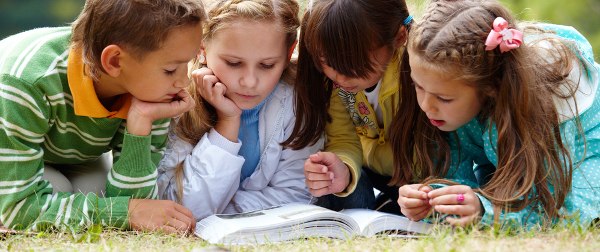
Whether it’s astronomy, computer programming or physics, getting started young is always a good idea. Getting kids interested in such big topics can be tricky, but there are some great books out there to make even the most difficult subjects exciting and fun.
10. Pop-Up House of Inventions: Hundreds of Fabulous Facts about Your Home
By Robert Crowther

This pop-up book was created to teach kids about all of the weird and wonderful inventions that they can find in their home and beyond. The book takes the reader through all the rooms in the house, letting them peek in cupboard and under rugs, to discover new facts about things in the home.
9. See Inside Inventions
By Alex Frith and Colin King

This book teaches kids the mysterious and funny stories behind inventions. It aims to teach children the differences between discovery, invention and innovation, and how they come together.
8. iPad for Kids: Using the iPad to Play and Learn
By Brian Proffitt

Children are becoming more and more used to technology, with mobile gadgets becoming part of their daily lives. iPads and other tablets are seen as new toys, and companies have reacted to this by creating children-friendly apps and games, to help them learn and play and use the devices safely. This book illustrates ways kids can get started with iPads – they can learn the basics of how to use them, how to connect to the internet, use apps and how using iPads can help them learn.
7. Hello World!: Computer Programming for Kids and Other Beginners
By Warren and Carter Sande

Although it is not the easiest subject for children to grasp, it can be a valuable skill and one that many kids will find extremely fun and interesting. Providing a thorough introduction to computer programming, the book is aimed at children around the age of 12 (and above) and shows them all the cool things you can do with this skill, from making computer games to one day starting your own business, or simply learning more about how your computer works from the inside out.
6. There’s No Place Like Space: All About Our Solar System
By Tish Rabe & Dr Seuss

This bestselling book has been revised over the years to accommodate for the downgrading of Pluto from planet status to a dwarf planet. It is accurate and fun, with playful rhymes that aim to teach young children about the solar system.
5. Furious Forces: The Physics at Play in the World’s Most Popular Game
By Rhett Allain – National Geographic Kids

This Angry Birds themed book is a great gift for kids who are a fan of the game. It aims to concisely explain physics at work in the world, and the physics involved in the video game itself. A more fun and engaging way for kids to learn about physics.
4. How Things Work
By Conrad Mason

This book is full of hidden facts behind over 90 flaps, with information on loads of types of machines and gadgets. It also includes internet links with games, animations and experiments, for a truly interactive book.
3. How Cool Stuff Works
By Chris Woodford

A bit of a modern twist on Conrad Mason’s classic pop-up book, this is more focused on recent technologies, with information on how gadgets and technology work, from Bluetooth to the Wii. Readers can take a close look inside their favourite games consoles and find out the inner workings of some of the most exciting technology currently in our everyday lives.
2. Who Was Steve Jobs?
by Pam Pollack and Meg Belviso

This short story about the life of Steve Jobs is aimed at the younger reader, giving them an insight into one of the great technological minds of the past few decades. This book is part of a series, including books about Albert Einstein, Charles Darwin and Neil Armstrong.
1. Python for Kids: A Playful Introduction to Programming
By Jason R. Briggs

This book aims to bring the language of programming to life, making it as exciting and fun as possible. Each chapter ends with programming puzzles to challenge the young reader. By the time a child has finished the book they’ll have learnt to program two computer games, use data structures and create animations.






